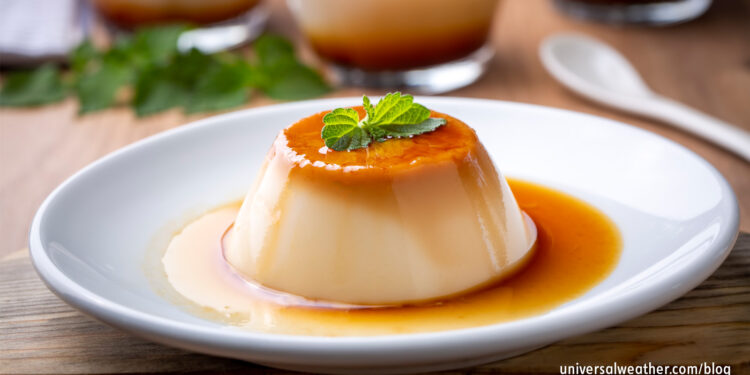In-flight Catering and Desserts Onboard: Maximizing the Passenger Experience

This is a post by author Richard Peterson. Richard is the Manager of Flight Attendant Services for Air Culinaire Worldwide®, with a headquartered kitchen in Tampa, Florida. Air Culinaire Worldwide has kitchens in Aspen; Boston; Chicago; Dallas; Denver; Las Vegas; London; Long Beach; Miami; New York; Paris; San Francisco; San Jose; Seattle; Van Nuys; West Palm Beach; and Washington, D.C. In addition, Air Culinaire Worldwide provides in-flight catering services at airports around the world via hundreds of catering partners. Richard is an expert in catering for business aviation and can be contacted at richardpeterson@airculinaire.com.
This is part one of a two-article series on in-flight catering and desserts.
Choosing just the right dessert can help take the passenger flight experience to the next level. Keep in mind, however, that dessert preferences vary depending on what part of the world you’re in, as well as on dietary and religious requirements of your passengers. Not all desserts – such as cherries flambé – translate well to the dining experience at FL450.
The following is an overview of what you need to know when serving desserts in flight:
1. North American dessert preferences
In North America passengers often prefer simple, sweet desserts that may be described as “comfort foods.” Cookies, brownies, tarts, and cheesecakes are often popular with North American-based passengers.
2. Various international dessert specifications
In European cultures desserts tend to be more sophisticated and complex – items heavy in chocolate, or laden with fruit, followed by a selection of cheeses. For the Middle Eastern palate, sweet elements are often introduced mid-meal followed by chocolates at the end of the meal. When catering for Middle Eastern passengers, dried fruits and nuts along with fresh fruits are always popular. In Asia cut whole fruits are usually the preferred dessert option – often accompanied by a simple syrup. People typically do not consume a lot of sweets in Asia. Instead, they prefer less sweet items such as tapioca or rice puddings. For South American cultures, there’s a trend toward desserts that are not overly sweet. South Americans often gravitate toward something more along the lines of coconut pudding – made with gelatin, coconut milk, and condensed milk.
3. Going beyond “safe” dessert options
Many crews tend to order dessert items they’re most comfortable with and consider to be safe options. However, even in North America, we’re seeing a trend toward twists on classic dessert presentations. Fruits, nuts, and even cayenne peppers are being added to chocolate desserts. Many passengers have become very specific in chocolate requests – asking for particular coco content. Chocolatiers have been spicing up their selections by introducing unique items, such as chocolate with bacon.
4. Seasonality considerations
Depending on your destination, dessert items may or may not be available year round. For example, ordering fresh raspberries off season in Panama or Oman will create challenges. Such items may be expensive and/or not top quality if obtainable at all. Best practice is to be somewhat flexible and adventuresome in terms of seasonality and local specialties. If you’re uplifting catering in Switzerland, and your passengers want a specific chocolate syrup, be sure to bring this with you as it may not be available there. Always speak with your caterer to find out what’s available and freshest, at a particular destination. If you cannot source strawberries for a parfait, consider using coconut or mango if those fruits are in season.
5. Allergy and health considerations
While many options exist in Europe and North America to address passengers with allergy or health/religious restrictions, this is not always the case outside of these regions. Gluten and nut allergies are common, and it’s important to understand such passenger restrictions. If you cannot obtain nut- or gluten-free catering, go to Plan B and shop for local ingredients at destination. Consider keeping properly packaged items onboard for passengers with food sensitivities. When in doubt err on the side of caution. In a closed aircraft cabin environment, even a pilot eating a peanut butter sandwich on the flight deck may negatively impact a passenger with a nut allergy.
6. Tips on sourcing catering
Provide a minimum of 24 hours’ advance notice when ordering in-flight dessert catering. Always ask about local specialties for the region you’re operating to. Florida, for example, is famous for key lime pie, while England is well known for “trifle,” a custard, fruit, and cake dessert. If you don’t have sufficient lead time, consider dessert items that are easier to source – such as cookies. If you can’t find an item or ingredient you want, check out local restaurants and/or pastry shops.
Conclusion
While there are traditional and cultural norms that should always be considered, there are always ways to make the onboard dessert experience something that your passengers will remember fondly. It’s always important to be flexible and creative in sourcing new, unique, and fresh options at a particular destination.
Questions?
If you have any questions about this article or have other questions about in-flight catering, contact me at richardpeterson@airculinaire.com.



